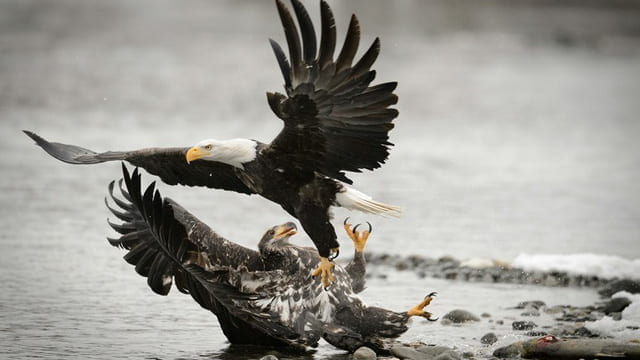High Country News article about our lab’s work in Alaska.
… By late morning, eagles are all around us. “Look at that eagle party across the way,” says Taal Levi, a wildlife ecologist with the Cary Institute of Ecosystem Studies, whose tales of this ecological mother lode inspired Wheat’s doctoral project. He points to 50-plus eagles bunched in cottonwoods beyond the river, explaining that since they’re not breeding, they’re less territorial. “Though they do like to steal from each other.”
As if on cue, an adult chases a young bird from some bait near a remote-controlled net gun, and bingo — Lewis flips the switch. Like a starter’s pistol at a track meet, the gun’s crack sends us dashing toward our catch.
Lewis carefully extracts feathers from the netting. He pops a hood over the giant raptor’s head, covers its shiny black talons with handmade leather booties, then hands the bird to Wheat, who cradles it against her chest as she heads back to the road.
At almost 15 pounds, it’s clear we’ve got a female. She’s fearsome, with a massive hooked beak and flesh-shredding talons that curl around Lewis’ exposed fingertips after he takes off a bootie to give us a peek. Yet she sits calmly as Lewis threads a Teflon harness with the GPS under her wings and around her chest, positioning the device just behind her head. Her breast feathers feel silky and warm against the frosty air.
Wheat clips a few of them for stable isotope analysis, which ecologists have long used to infer an animal’s diet based on the levels of carbon and nitrogen. Wherever birds forage, the elements in the food suffuse their feathers as they grow. Wheat hopes the approach, tested in songbirds but not eagles, will tell her where the migrants lived and fed before she tagged them.
Read the whole article here.

